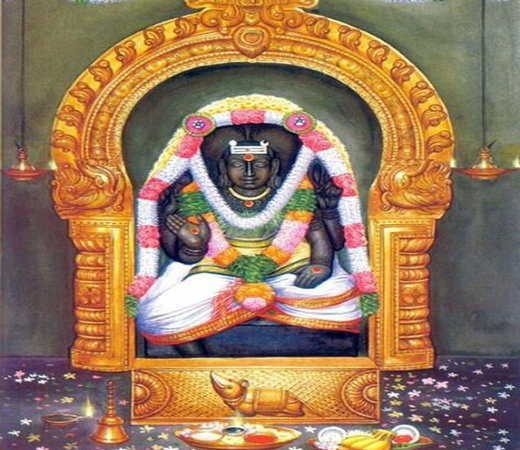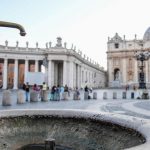Ganesha (Adi Vinayaka Temple ) is always worshipped as “Gajmukh” (elephant head), but in there is a unique temple in Tamil Nadu, where Ganesha is worshipped with a human face (Nara Mukha Vinayaka).
This one of a kind temple is located in Muktheeswarar Temple near Thilatharpanapuri, Tamil Nadu. It is known as Adi Vinayaka temple. Because of the human face, this Adi Vinayaka’s divine form is also known as ‘Nara Mukha’ Vinayaka. This was Ganesha’s divine form before he became the ever popular Gajanana or the elephant-faced deity – Ganesha Worshipped.
Legend
According to the legend Lord Rama was trying to perform last rites for King Dasarath. But every time he prayed, the four rice balls (called as Pindam) that he kept infront of him, turned into worms. Dismayed by this, he prayed to Lord Shiva, who advised Rama to go to Mantharavanam (earlier name of this place) and offer his prayers there. Lord Ram visited this temple and performed Shiv pooja for the salvation of the father Dashrath’s soul, to his surprise, the four pindams became four Lingams. These Lingams are enshrined here in Muktheeswarar Temple, which is near Adi Vinayak Temple.
Even today, devotees visit this temple and offer prayers to get rid of the ‘Pitr Dosh’. The name Thilatharpanapuri comes from two words “Thil” meaning Gingely and “tharpana” is the Hindu ritual of performing “pithru karmas” to ones ancestors.
About the Temple
The five-foot tall majestic presiding deity of the temple – Nandrudayan Vinayaka adorning a Naghabharanam around his waist, has a Naganandhi facing him at the Eastern entrance of the temple. It may be mentioned that Nandi Deva is generally associated with Siva Temples only. The Seventh Century Tamil savant Sambandar had in one of his pathikams praised the presiding deity of the temple thereby indicating that this is one of the oldest temples in Sirapalli (Tiruchi).
The brilliantly sculptured granite idol of Ganesnha is indeed captivating, he holds the axe, symbolising the destruction of all desires, a rope to indicate his willingness to rescue anyone from the mire of vasanas, the modaka representing the joyous reward of spiritual life, and lotus symbolising that all can achieve the supreme state of self-realisation. The large belly of Ganesha is to convey the idea that a Man of Perfection can consume and digest whatever experience he undergoes. The tiny rat which is seated in front of the Lord amidst a rich collection of food is to indicate that a perfect man – like the rat, will have total control over his desires.
Inside the small shrine one could also see the idols of Adi Sankara, Sage Veda Vyasa, Goddess Gayatri, Sadasiva Brahmendra and Saint Pattinathar. According to Sage Ramarathinam, Trustee of the temple, the Kanchi Paramacharya, used to offer worship at the Thayumanavar and Uchipillayar temples atop the Rockfort. When he visited the temple about 60 years ago he suggested the rendering of the Vedas in the temple everyday it is being followed, the reciting done by scholars. Special poojas are performed for Adi Vinayagar on Thursdays.
In the annual music festival conducted for the past 83 years almost all leading musicians have participated
Significance
There are 7 sthalams for performing these rituals according to the Hindu scriptrues – Kasi, Rameswaram, Srivanchiyam, Thiruvenkadu, Gaya, Thiriveni Sangamam and Thilatharpanapuri. This place is considered equivalent to Kasi or Rameswaram. Performing tharpanam here on Amavasya day is considered special. This is a Mukthikshetram. The shrine for Aadi Vinayaka is just outside the main temple.
The story of Shiva beheading Naramukha Vinayaka who was created by Parvati and then replacing the head with an elephant head is well known. What is less known is, Shiva had instructed his troops to fetch the head of anyone found sleeping with his head placed towards North. They found this elephant sleeping with its head towards North. Shiva named the boy Ganapati – meaning commander of his troops and granted a boon that Ganapati shall be worshipped by everybody before starting anything new.
Beliefs
Devotees believe that Maha Guru Agasthya Himself worships the Adi Vinayaka on every “Sankatahara Chathurthi” Day. It is also believed that worshipping the Ganesha here brings peace in the family relationships and with the blessings of the Vinayaka childrens memory is boosted.









